Bringing People Together to Play, Sing & Dance
In the roots music tradition one of the most common ways songs are passed along is through communal gatherings like square dances and jam sessions. Jam sessions give people an in person experience of playing and learning from other musicians, and having the opportunity to find a community in the music tradition of your choice through songs. Dances are just plain fun!
Information about PineCone Jams and Dances this month can be found on our events calendar.

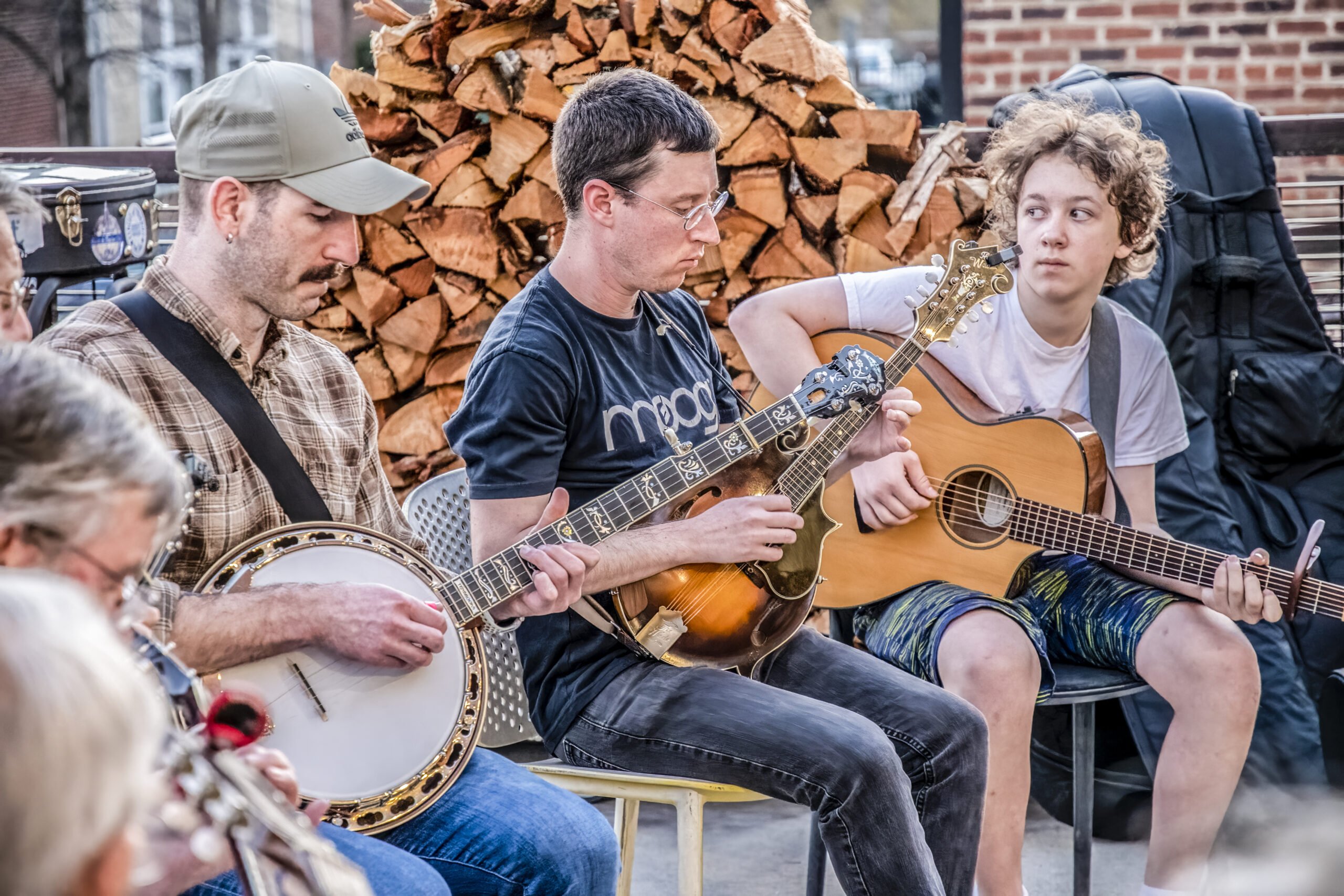
Jam Etiquette FAQ's
Anyone who has ever attended an organized traditional music jam or session has been challenged by the concept of etiquette. How does this thing work? What is appropriate, (and not)? How can I be a part of it, and still be sure I won’t embarrass myself? How can I get invited back again? Well, the good news is that reaching these goals is not rocket science. Most session etiquette is common sense. But just to be safe, here’s an easy introduction to get you started:
There are no simple answers to these questions. Any informal (non-band) gathering of musicians might use one of these terms. As a generalization, folk, bluegrass and jazz musicians favor the term “jam,” while Irish, Scottish and related traditional players prefer the term “session.” Both are generally public, non-performance situations where musicians play together for fun, camaraderie and learning.
“Open mics” are performance situations in which an individual or band may volunteer to get a piece of the spotlight for a brief set (average 2-3 songs). This will likely involve a stage and sound system.
Sort of. For example, in a bluegrass or jazz jam, you can expect a tune to be “passed around,” allowing players to take individual and improvisational solos. At bluegrass jams it's common for players to go around the circle and let everyone call a tune for the group to play. In and old time jam a key is chosen (often A, D or G) and then it's up to the fiddlers to call the tune. Old time jams are about the groove and it's rare for someone to take a solo. Irish traditional players tend to play in melodic unison, with little or no improvisation. These things are rarely written down or communicated, but they’re important to figure out!
It depends, but usually, yes. A certain amount of structure is required to keep things rolling smoothly, so it’s common for a leader to emerge or be chosen. At some point, they’ll generally be overthrown in a bloodless coup. This leads to splinter sessions, and more places for us all to play.
Here we find the foundation of etiquette! Everyone is welcome who makes a sincere effort to fit in, acts appropriately, and isn’t completely obnoxious. Be a good session-citizen, help those around you enjoy themselves, and you’ll be loved by all.
Who chooses and starts a tune?
Usually anyone can. Just be careful. Figure out how your session works, and act appropriately. Experience will be your best teacher; you can also ask the session leader or other participants about the session or jam format.
What tunes?
Listen long enough, and you can answer this yourself. Follow the leads of others. Introducing new tunes to the group is good, but people all like to play things they know, too. Balance is crucial.
What key?
Listen and find out. Generally, you’ll hear a lot of D, G and A in most jams and sessions. Often instrument limitations govern what keys the group can play in, so you need to understand the needs of those around you. For example, in an old time jam the banjos and often fiddles retune according to the key. If the group is playing tunes in a specific key be mindful about suggesting a tune that's not in that key. The decision to change keys during an old time jam is best made as a group.
What speed?
A reasonable one, and that will vary based on the venue and the players. Never, ever start a tune at a tempo that you can't maintain without flubbing.
How many times do you play the tune through?
This varies, too. In Irish sessions, it’s often two or three runs, which may lead directly to another tune, (this is called a “set”). In a bluegrass jam, it may go on until no one feels ready to step up with a solo. Old time jams are kinda like NASCAR. You keep going round and round until there's a wreck. Whomever called the tune is responsible for ending it. They raise their foot, or call out something like "last time" or "one more" before the last time through the tune. Occasionally the whole thing will implode of its own accord, and you'll figure out pretty quickly that it's safe to stop playing.
Songs and singing are an important part of most musical traditions, and are sadly lacking in many contemporary jams and sessions. However, “performances” are neither expected nor appreciated, so you need to understand the difference. Definitely sit in and observe for a good while before leaping in with a song!
Smile and be friendly.
If you're new to the session, observe first. Watch, wait, listen and learn — no matter how good a player you are.
Tune your instrument! Tune your instrument! Tune your instrument! It's also courteous to step away from the circle if tuning is going to take a while.
Don't start playing a tune while everyone else is tuning or talking. Remember, jams are about building community which is why people like to talk in between tunes.
If the jam is held in a bar or place that serves food please buy something. Get a drink, or buy a round for friends.
Be mindful of your cases and gear. If possible tuck your case under your seat or keep it close. It can be annoying to venue operators if cases are littered all around the space. They need patrons and their patrons need tables more than your case does.
No noodling! You’re either playing, or you’re not.
Stay in the genre! (Yes, ‘Stairway to Heaven’ is a cool tune, but….).
Don't talk loudly while everyone else is playing.
Only sit IN the session if you're going to PLAY in the session. Otherwise, sit nearby and observe.
Be aware of the skill levels, and how players at the various levels participate. Chances are, everyone gets to play.
Ask before recording a jam or session.
About handling other people's instruments: An easy guideline — Don't unless it's offered.
Don't be afraid to ask questions.
Most important of all: Have fun! That's really what it's all about!
Bluegrass & Old-Time Jams
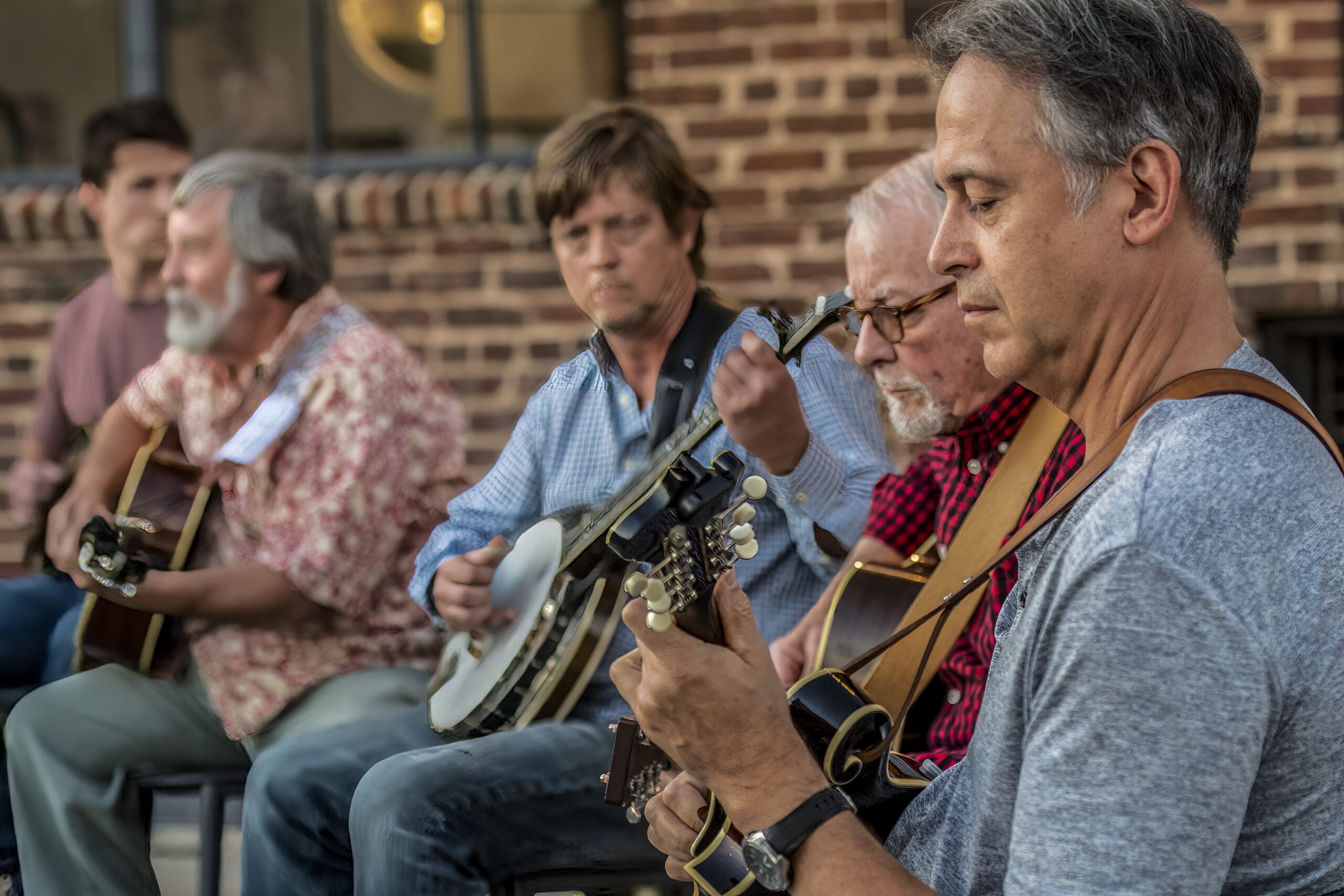
PineCone Bluegrass Jam: The PineCone Bluegrass Jam is a monthly jam session that happens 7-9 pm on the 4th Monday of every month at Transfer Co. Food Hall (500 E Davie St, Raleigh). This jam is for musicians of all levels and is focused on doing songs from the Bluegrass repertoire.
PineCone Beginner Bluegrass Jam: The PineCone Beginner Bluegrass Jam is a monthly jam session that happens 7-9 pm at Harry’s Guitar Shop (556 Pylon Dr, Raleigh) on the third Monday of each month. This jam is focused on songs that people with little experience can play.
PineCone Old-Time Jam at Riparian: Held on the 2nd Thursday of each month from 7-9 pm at the Riparian Provision Company (1408 South Saunders Street, Raleigh). This is an "up to speed" jam, lead by great players who work to make sure there's space for everyone in the tunes. NOTE: This jam has switched from Bluegrass to Old-Time (as of Oct. 10, 2024) in the interest of serving the Old-Time community in Raleigh.
List of songs frequently played at the
PineCone Bluegrass jam
These are just some of the songs frequently played at the PineCone Bluegrass Jams. If you can pick a couple of these tunes you should be in good shape.
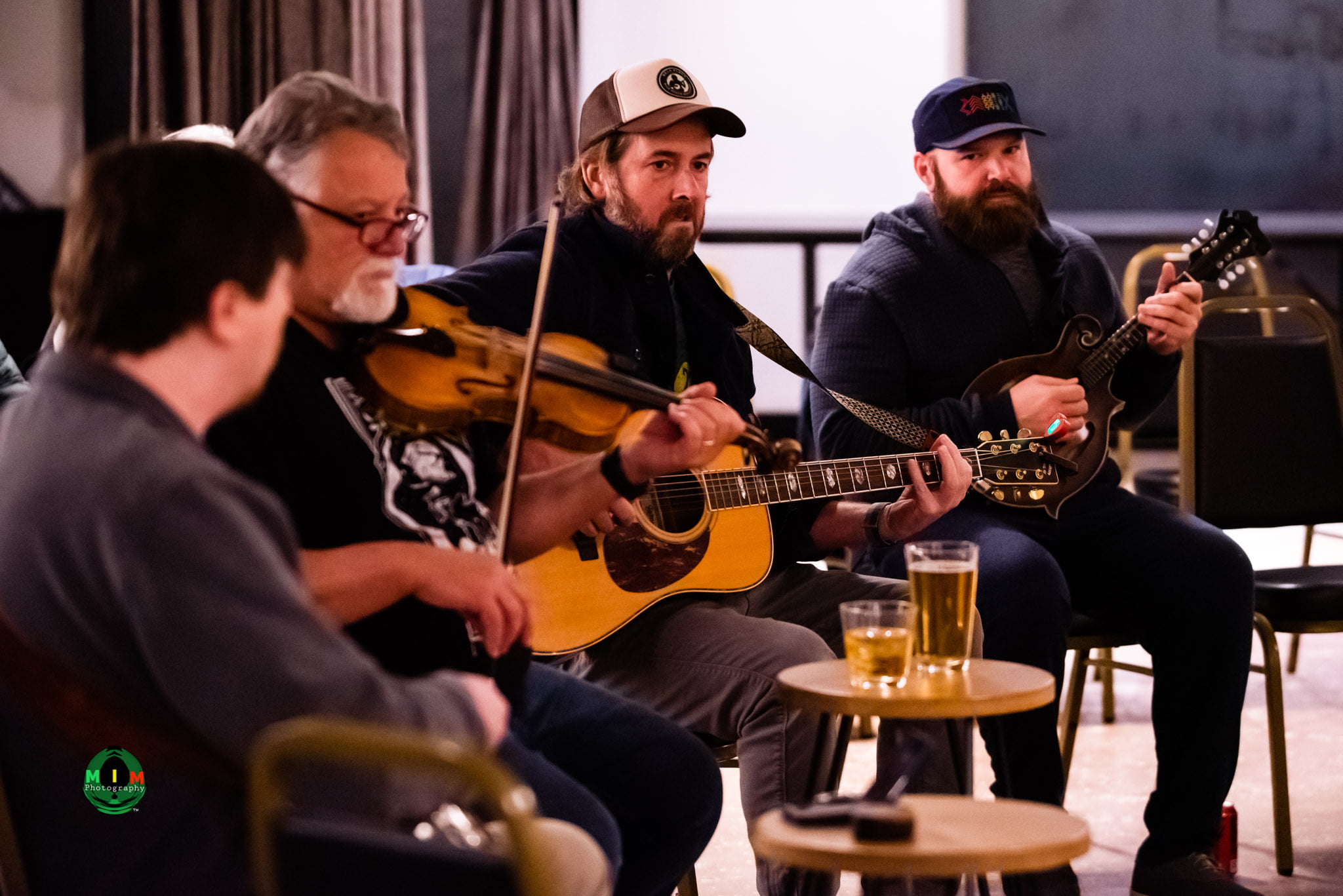
Big Spike Hammer
Banks of the Ohio
Cherokee Shuffle
Deep River Blues
Don’t This Road Look Rough and Rocky
East Virginia Blues
Foggy Mountain Breakdown
Foggy Mountain Top
Gold Watch and Chain
Greenville Trestle
How Mountain Girls Can Love
I’ll Fly Away
I Wonder Where You Are Tonight
Keep on the Sunny Side
Little Cabin Home on the Hill
Little Georgia Rose
Little Girl of Mine in Tennessee
Long Black Veil
Love, Please Come Home
New River Train
The Old Home Place
Red Wing
Roll in My Sweet Baby’s Arms
Salt Creek
Sittin’ on Top of the World
Soldier’s Joy
Some Old Day
Sunny Side of the Mountain
Wagon Wheel**
Whiskey Before Breakfast
White Dove
Worried Man Blues
You Ain’t Goin’ Nowhere
You Don’t Know My Mind
**So... we think Wagon Wheel is a great song, but be aware that some people love to hate it. You're gonna want to "read the room" before calling this one.
PineCone Youth Bluegrass Jam
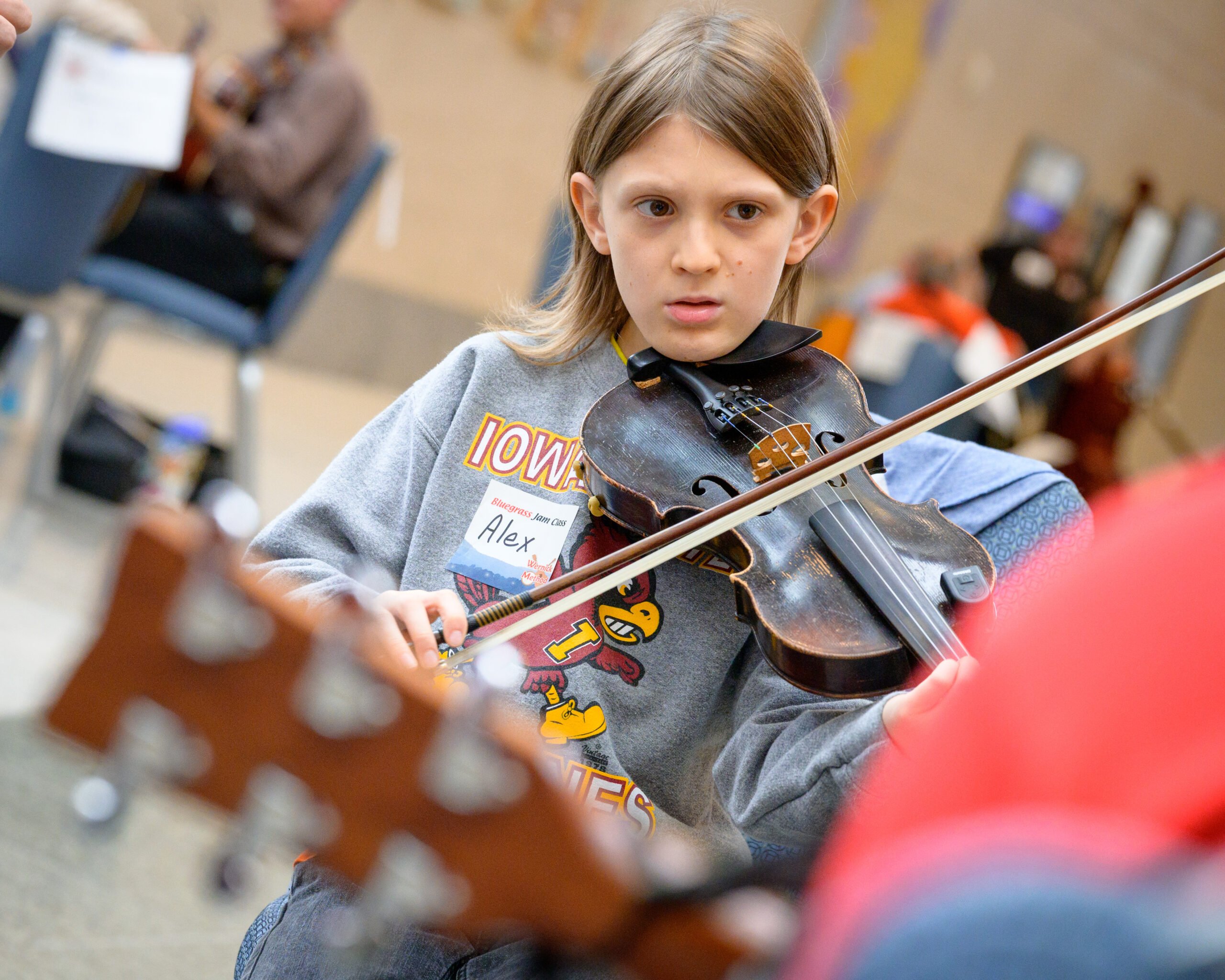
Calling all youth musicians
Fiddle, guitar, mandolin, banjo, bass, and other stringed instruments, you are invited to jam with your peers, other kids in the area who enjoy playing the same types of music you do! These fun, friendly jams will continue to include some skill building, and will also provide opportunities for young musicians to meet each other and learn about bluegrass jamming.
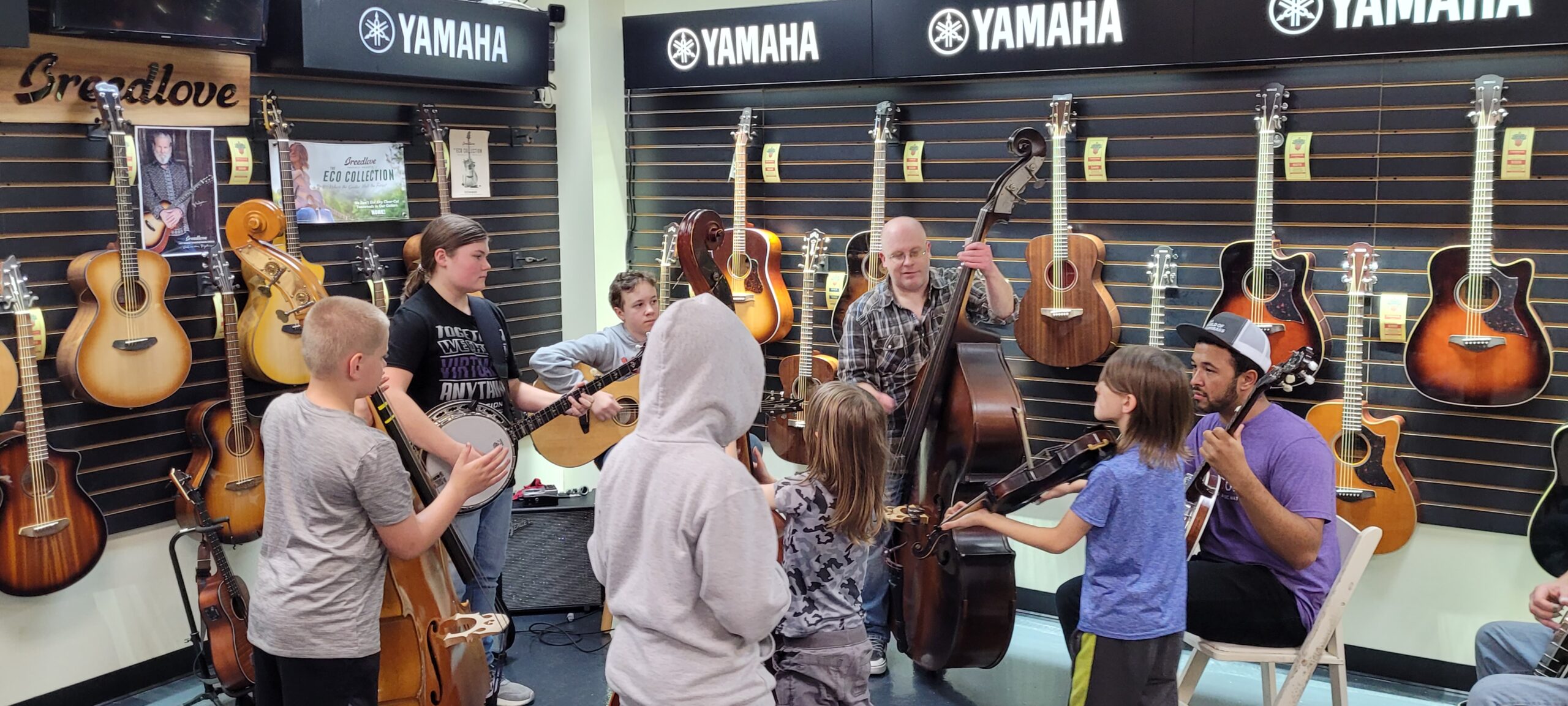
PineCone's Youth Jam [Temporarily on hold] is held on the 3rd Saturday of the month (mostly) 2:30 - 4:00 in the Cary Arts Center.
Paul Cooper Studio
Cary Arts Center
101 Dry Ave, Cary
Shape Note Music
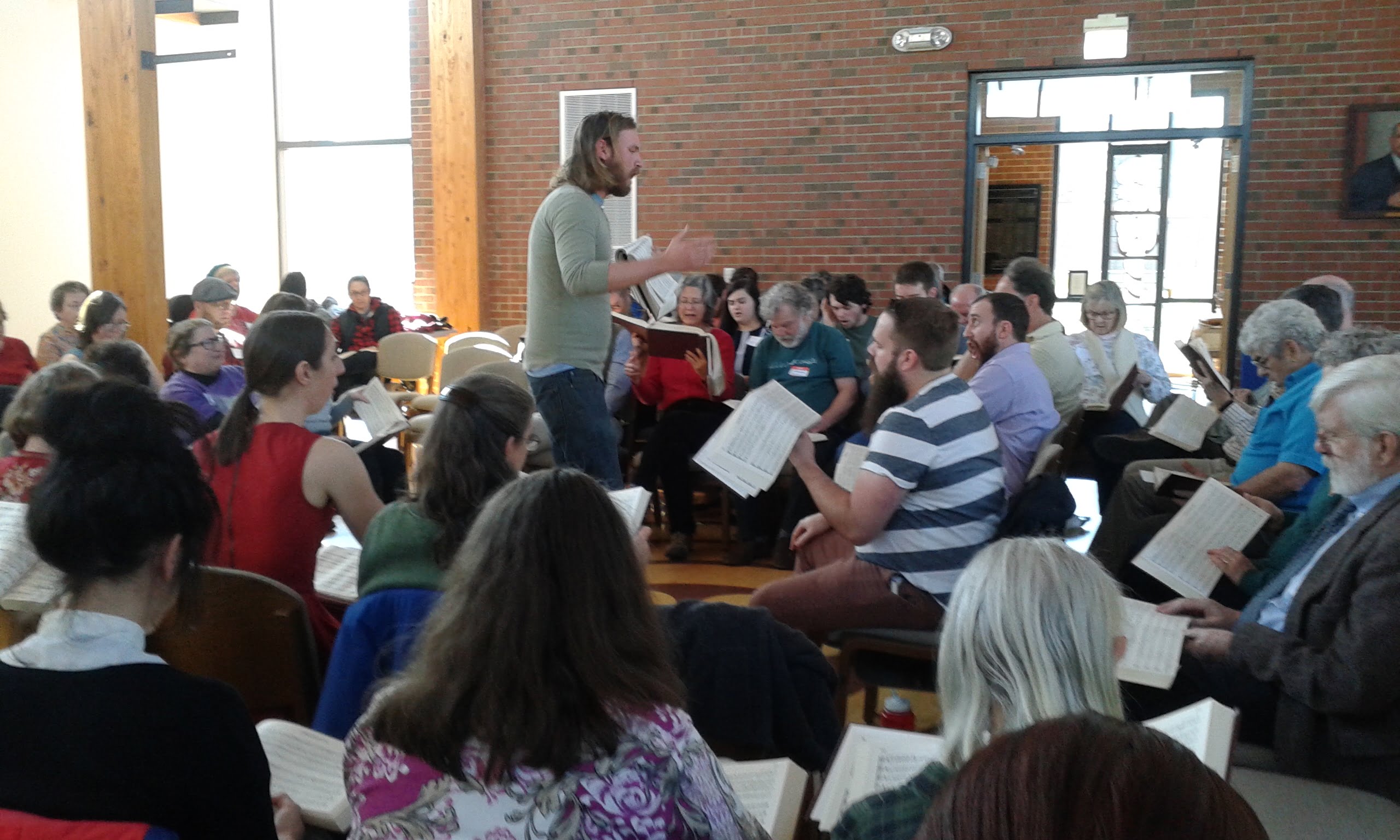
Sacred Harp singing is the largest surviving branch of traditional American shape note singing. Singers in this tradition sing without accompaniment and sit arranged by vocal part in a "hollow square," facing one another across the square and taking turns at leading from the middle of the square. The songs are sung loudly, with spirit and enthusiasm, and rich four-part harmonies fill the room. The leader of each song sets the tempo with a simple vertical arm movement, and singers sitting in the square often beat time with the leader.
Songs are sung from a tune book called The Sacred Harp, first published in 1844 and continuously updated since then. It includes more than 500 a cappella hymns, odes, and anthems. While the origins of this music can be traced back to Renaissance England, the singing tradition reached a peak of development in early New England, as itinerant singing masters set words to hymns, ballads, and folk tunes, and taught their songs in singing schools. However, it was in the American South that shape note singing found an enduring home. Today, the South is home to singing conventions, including some that date back more than 100 years.

Shape Note Music
Our friends at North Carolina Shape Note keep track of open sings around the state. Most sessions begin with a primer for newcomers and end with refreshments.
Visit the NC Shape Note website